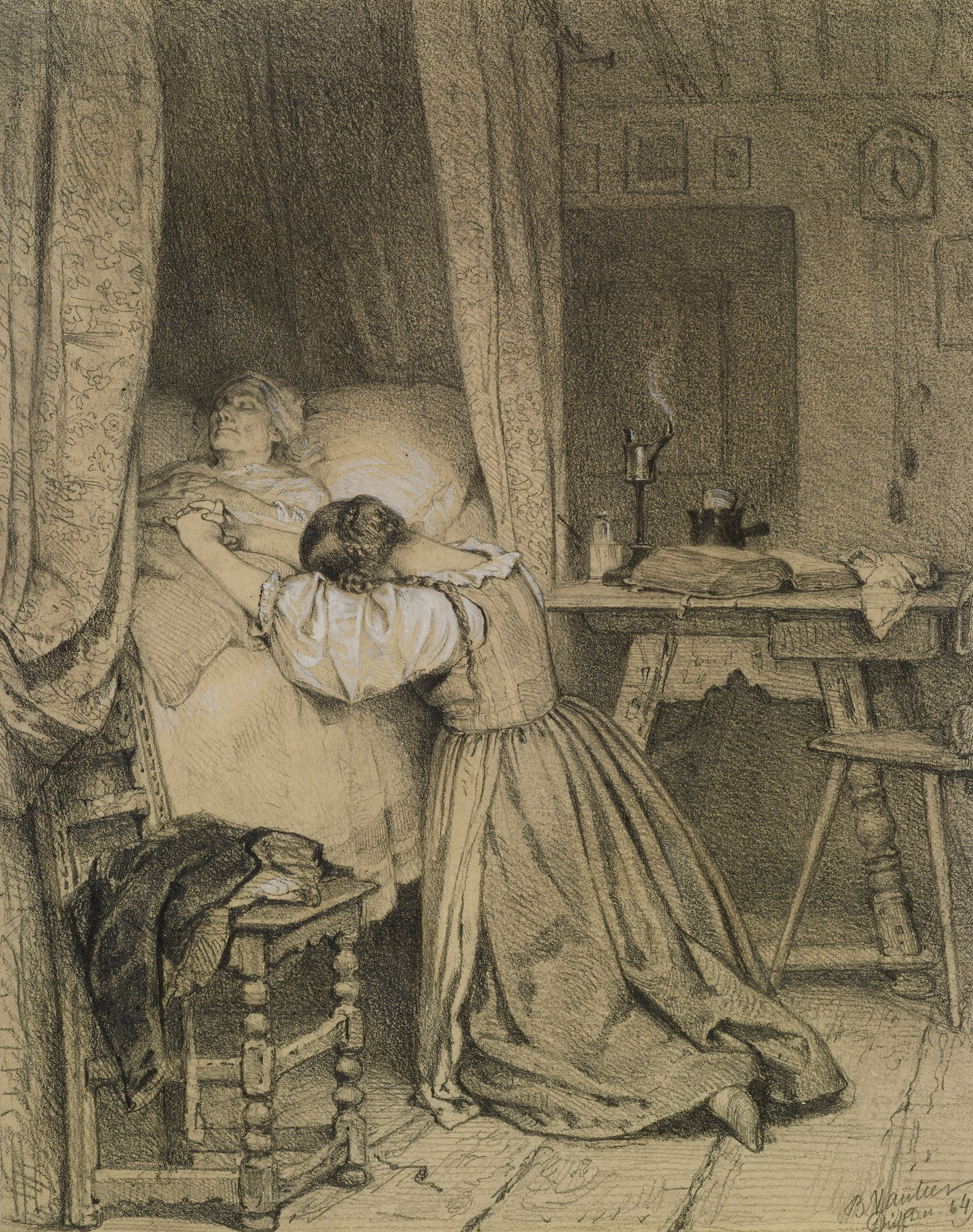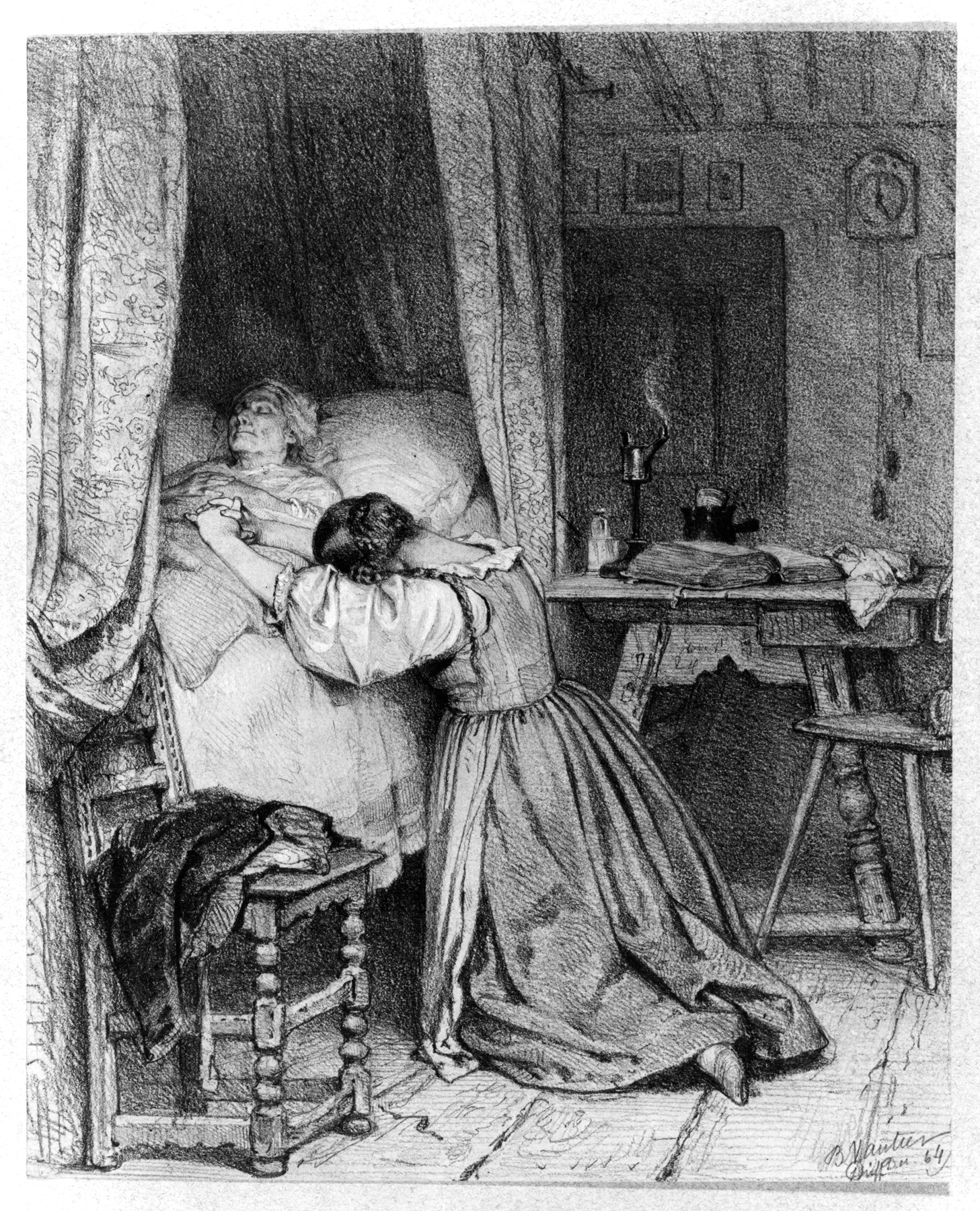Woman Praying at a Deathbed
(18th and 19th Centuries )
Vautier, a prolific and commercially successful artist during his life time, is often grouped with the best known German academic genre painters of the 19th century, such as Franz von Defregger and Ludwig Knaus. Like Defregger and Knaus, his works were very fashionable, and circulated widely as prints and photographs.
Vautier had studied in Düsseldorf, and after 1858 he settled there. Throughout his life he undertook a journeys into the countryside during which he made studies that would become the basis for later finished works. Peasant life in the Black Forest was a favorite theme. He was particularly skilled as capturing nuanced emotions through gesture and objects. In this drawing the open Bible on the table and what seems to be a rosary on the floor suggest a devout life and the promise of salvation after death.
Inscription
Provenance
Provenance (from the French provenir, 'to come from/forth') is the chronology of the ownership, custody, or location of a historical object. Learn more about provenance at the Walters.
Commissioned by William T. Walters, Baltimore, ca. 1863; inherited by Henry Walters, Baltimore, 1894; by bequest to Walters Art Museum, 1931.
Exhibitions
| 2017 | Training the Eye: 19th-Century Drawing. |
Conservation
| Date | Description | Narrative |
|---|---|---|
| 1/9/2017 | Treatment | examined for exhibition; other; re-housed |
Geographies
Germany, Düsseldorf (Place of Origin)
Measurements
H: 10 1/4 x W: 8 1/8 in. (26 x 20.6 cm)
Credit Line
Acquired by William T. Walters
Location in Museum
Not on view
Accession Number
In libraries, galleries, museums, and archives, an accession number is a unique identifier assigned to each object in the collection.
In libraries, galleries, museums, and archives, an accession number is a unique identifier assigned to each object in the collection.
37.1299




